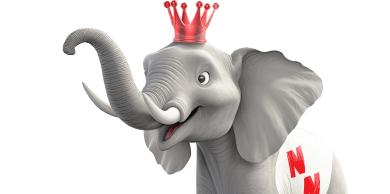Oh, no! You see a line of ants going after a dropped crumb on the floor, but what kind of ant is it? Different types of ants pose different concerns. So, let’s do a deep dive into some of the most common ants that lurk in Florida homes.
To learn more about common ant species in Florida, visit our Ant Pest Library page!
Carpenter Ants
First up on our list is the Florida carpenter ant. These can easily be confused with termites since they’re often found tunneling through wood. Here’s how you can identify carpenter ants.
How to identify carpenter ants
The head, thorax, and body of carpenter ants are reddish to orange with a black front body section. They are one of the largest ant species, with workers ranging from 1/4 to 1/2 inch long and winged females up to 3/4 inch long.
In Florida, carpenter ants are a year-round pest problem, and they’re most active at night when they forage for food.
Carpenter ants in Florida are highly attracted to damaged wood. They do not eat wood, but they tunnel through it to create nests and galleries (tunnels and chambers) for their colonies. They’re attracted to sweets such as sugary sodas, food, garbage, and pet food. They also eat dead or living insects and honeydew produced by other insects.
While carpenter ants don’t sting, they have strong mandibles that can bite humans if they’re threatened. The bites can be painful and leave an itchy bump.
When is carpenter ant season?
Carpenter ants are a year-round pest problem in Florida, but the main carpenter ant swarming season typically occurs in the spring, around April to June. The spring swarms are triggered by environmental conditions like warm temperatures, high humidity, and rainfall.
How to get rid of carpenter ants?
Here are some tips for keeping carpenter ants away!
- Locate and eliminate moisture sources like leaks, use a dehumidifier, and improve ventilation in your home.
- Seal entry points around windows, doors, and utility lines.
- Remove food sources.
- Trim vegetation around your home.
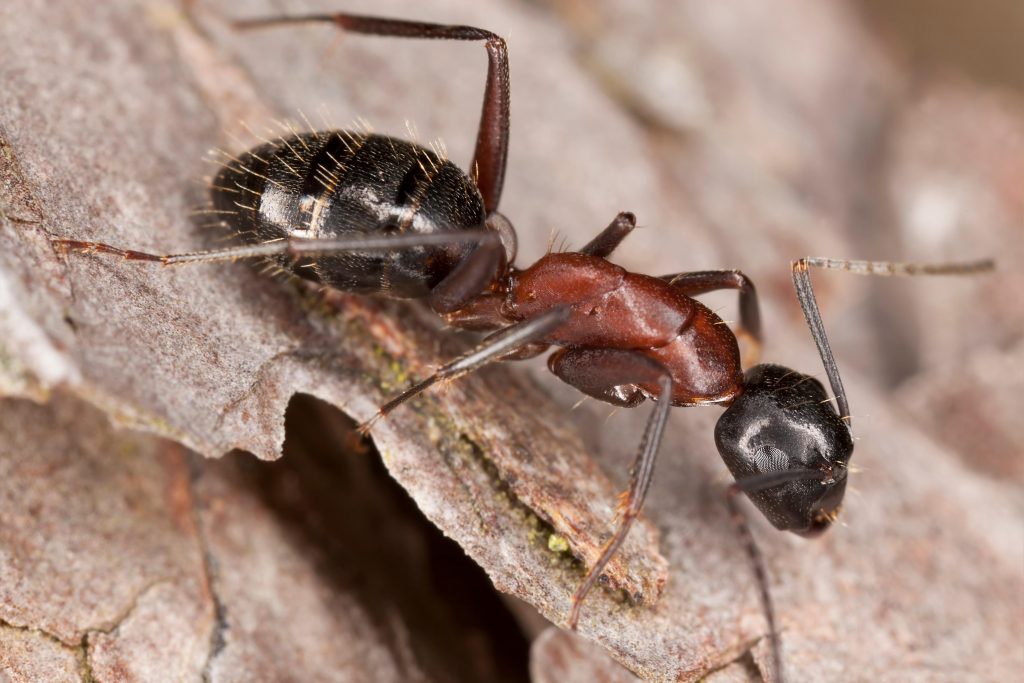
Ghost Ants
Up next are the creepy and cool ghost ants! These unique ants have light white, almost translucent abdomens and legs, giving them their ghostly name. They can also be referred to as Sugar Ants due to their love of sugar.
How to Identify ghost ants
In addition to their color, ghost ants are particularly tiny ants, approximately 1/16” in length. They are active year-round, but activity may increase during the summer when temperatures and humidity levels rise.
They are attracted to food, moisture, and warmth. They are especially attracted to foods that are sweet, high in protein, or greasy, such as sweet drinks, syrups, and food crumbs. They’re also attracted to moist areas with access to water, such as bathrooms, basements, greenhouses, kitchens, or around leaky appliances. They’re not dangerous or destructive, however, they can contaminate food, so you’ll want to make sure food is put away safely.
How to get rid of ghost ants?
Here are some tips to prevent ghost ants from being attracted to your home:
- Clean up spills promptly, store food in sealed containers, and keep trash in tightly closed bins.
- Fix any leaky pipes, faucets, or other moisture sources.
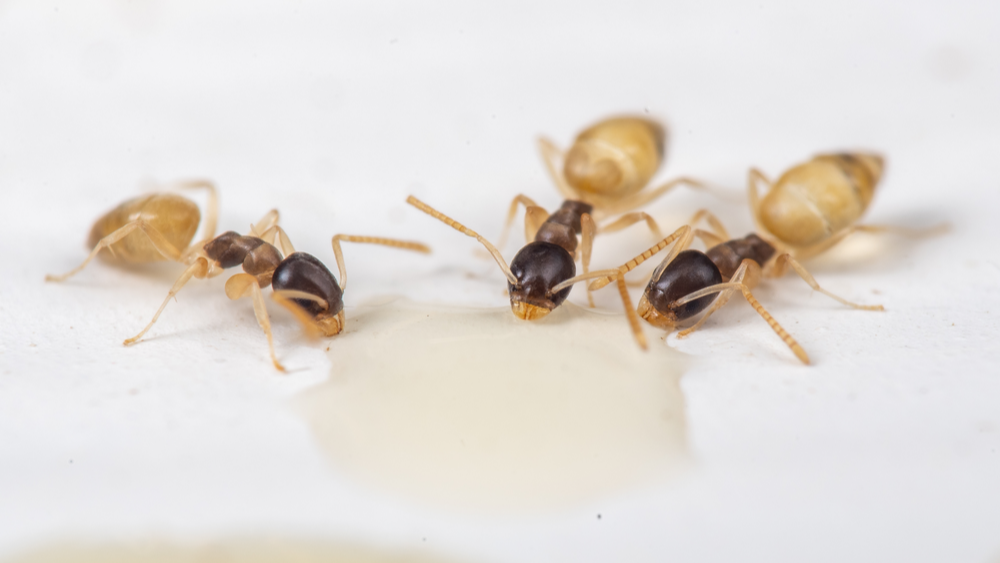
Fire Ants
Another kind of ant that’s common in Florida is the fire ant. Fire ants can be dangerous, so let’s learn how to spot them.
How to Identify fire ants
Fire ants are black and red in color, around 1/8″ to 1/4″ long, with a rounded head. The most recognizable sign of a fire ant infestation is the dome-shaped mounds they create in the ground. They build their mounds in open, sunny areas like lawns, pastures, parks, and along sidewalks and roads. However, they have also been spotted under logs, around trees, inside electrical equipment, and under buildings. If you see a mound on your property, avoid it, and call for professional treatment.
People, pets, and other animals who unknowingly disturb their mounds can be quickly covered with stinging ants. Significant illnesses and deaths have occurred from allergic reactions to their venom. Fire ant venom is unique and produces an immediate and painful stinging, burning sensation. Later, white pustules will form on the skin at the site of the sting.
When is fire ant season?
In Florida’s warm climate, fire ants are active year-round, but their activity peaks in the warmer months from spring through fall, being most active when temperatures are between 70°F and 90°F.
How to get rid of fire ants?
You’ll want to call a pest control professional to help remove a fire ant mound. They will treat the mound to target both the colony and the queen to prevent the ants from coming back. To prevent fire ants, here are some tips:
- Keep your lawn free from food sources. Clean up food waste and keep trash cans sealed. Don’t leave out pet food or food debris.
- Limit moisture by fixing any leaky faucets and don’t overwater your lawn.
- Maintain your lawn and remove dead wood, leaf piles, or lawn clippings where fire ants may nest.
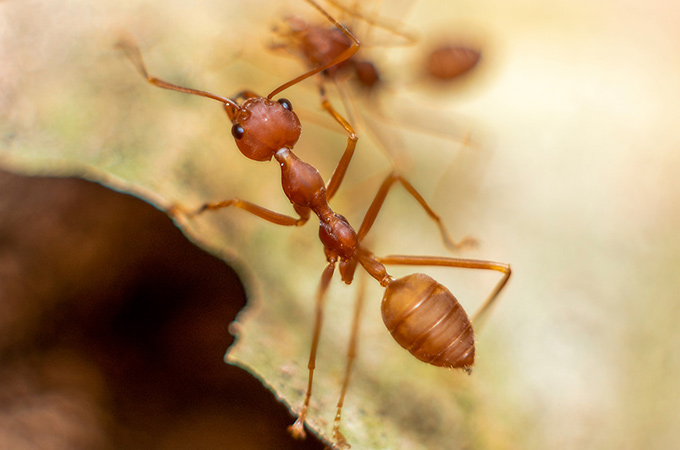
Big Headed Ants
Watch out for the big headed ants! These small but mighty ants can be a real headache for Florida homeowners.
How to Identify big headed ants
Don’t let their size fool you–big headed ants pack a big punch. There are two distinct sizes of workers in a colony. The larger major workers are 1/8 to 1/4 inch long and have disproportionately large, heart-shaped heads compared to their bodies. The smaller minor workers are about half that size with more proportional heads.
Big headed ants range in color from yellowish to light or dark brown. They have two spines on their waist that point almost straight up. While they don’t sting, big headed ants can bite if their nest is disturbed, though luckily their bite isn’t very painful.
Big headed ant nests are commonly found in sandy soil, often under logs, rocks, flower pots, and landscaping timbers. They make small crater-like mounds with visible entry holes. Indoors, they may nest under foundations and come in through cracks, leaving piles of loose dirt and debris around baseboards and carpet edges.
These ants have a varied diet, feeding on seeds, dead insects, and the sweet honeydew produced by aphids and scale insects. Inside homes, they are attracted to sugary foods and grease.
When is big headed ant season?
In Florida’s warm climate, big headed ants remain active most of the year, though they are less active in the coldest winter months of January and February when food is scarce. They tend to swarm and mate in mid-summer.
How to get rid of big headed ants?
Big headed ants can be tricky to control because they often form large supercolonies with multiple queens that can span several properties. Effective treatment requires addressing the entire infestation.
To prevent big headed ants, try these tips:
- Eliminate food sources by keeping kitchens clean and storing food in sealed containers.
- Manage moisture issues indoors and out.
- Seal entry points around the house and foundation.
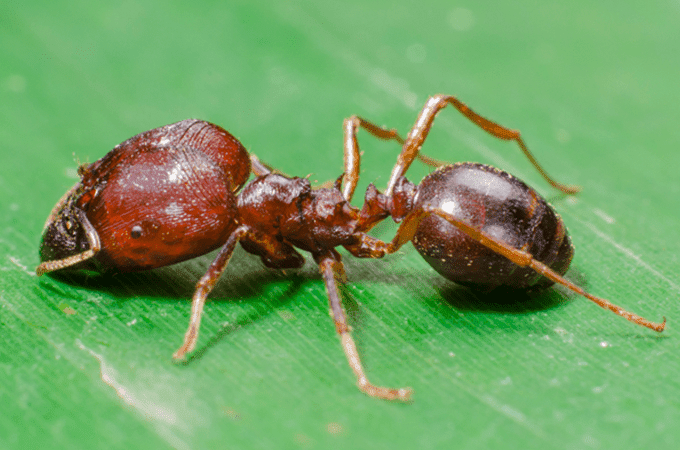
Flying Ants
Flying ants are not a specific species of ants, instead, ants will grow wings during swarming season to mate and set up new colonies. Flying ants can swarm year-round in Florida, with the prime time being late spring into early summer. If you see flying ants around food or water sources, call a professional as this could likely mean you have a colony in your home or property. Flying ants can also be confused with termites. Check out our recent blog post breaking down the differences between flying ants and flying termites, including their size and appearance, behavior and habits, and more!
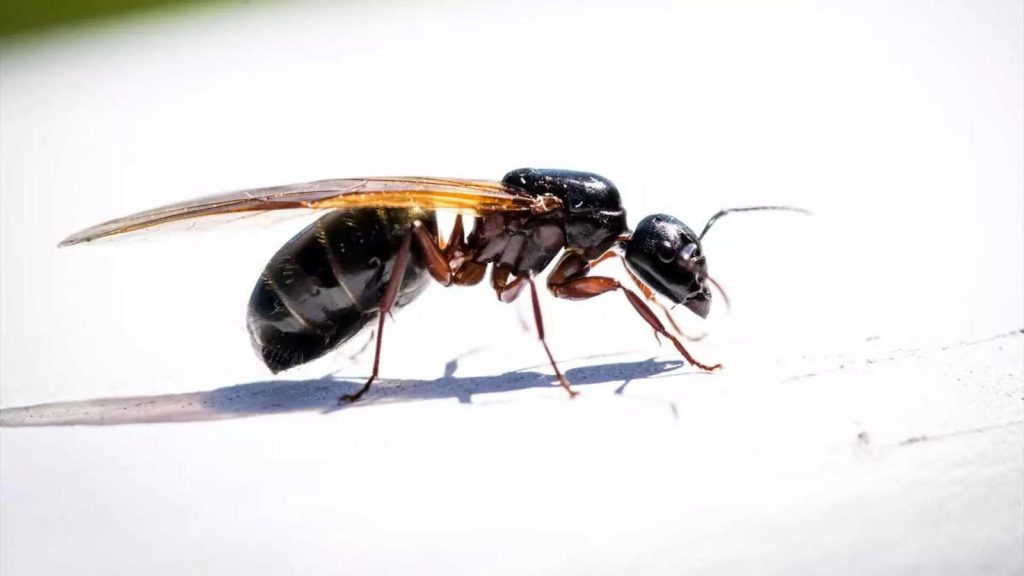
If you consistently have ant problems and can’t keep them away with store-bought traps or sprays, you need to address the issue at the source. Call a trusted pest control professional like the pros at Nozzle Nolen. Learn more about our ant control services.




